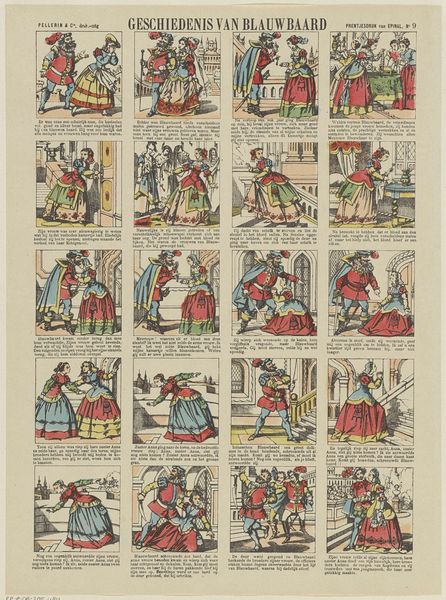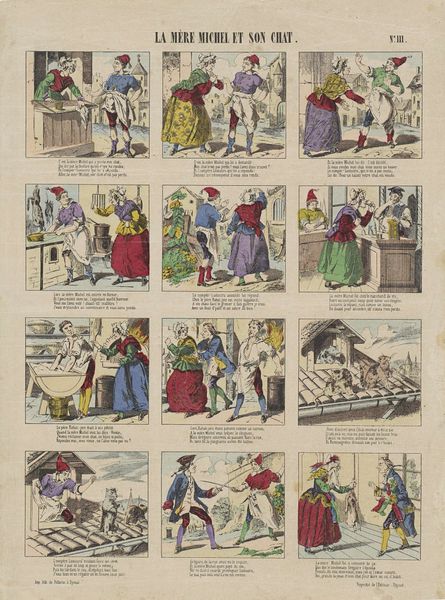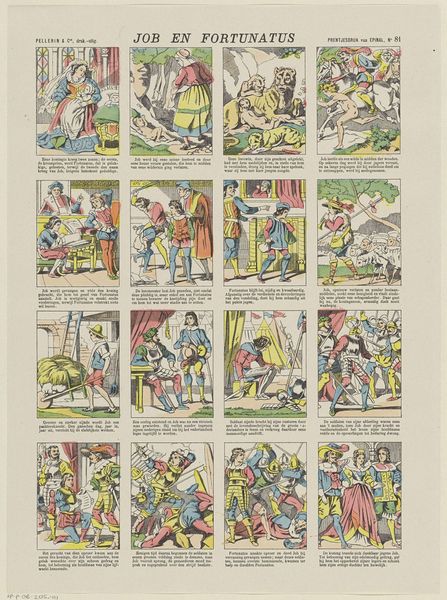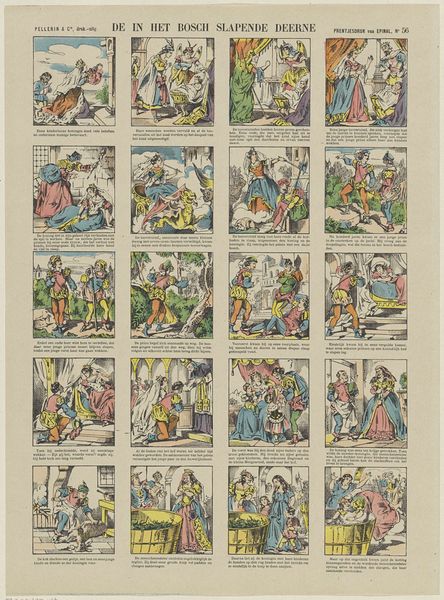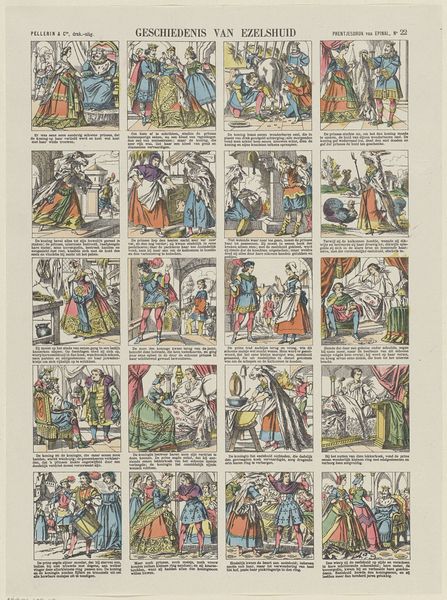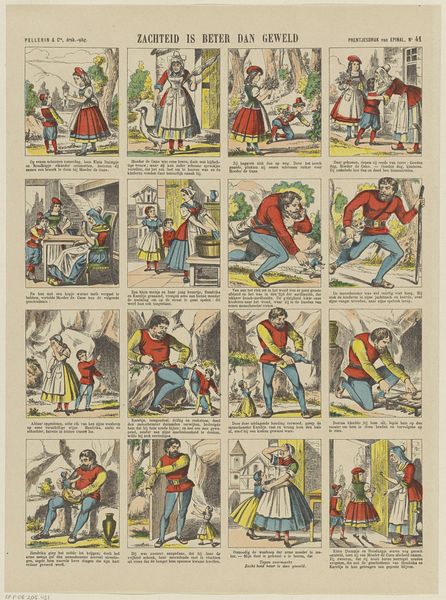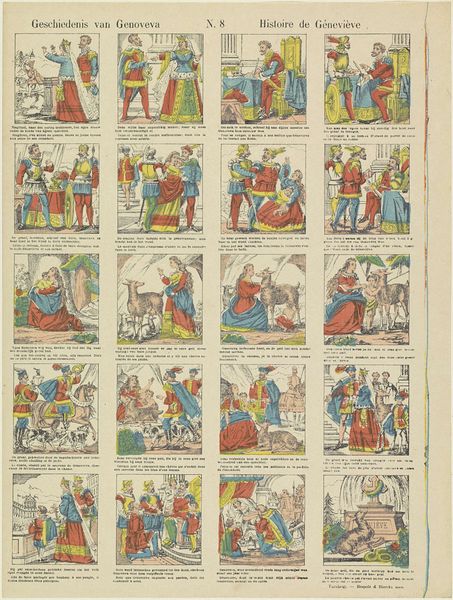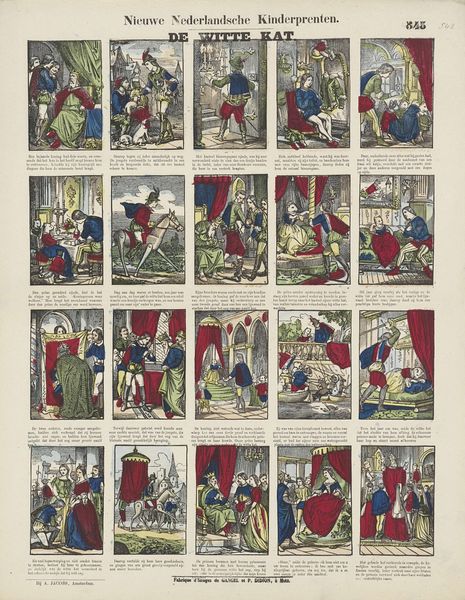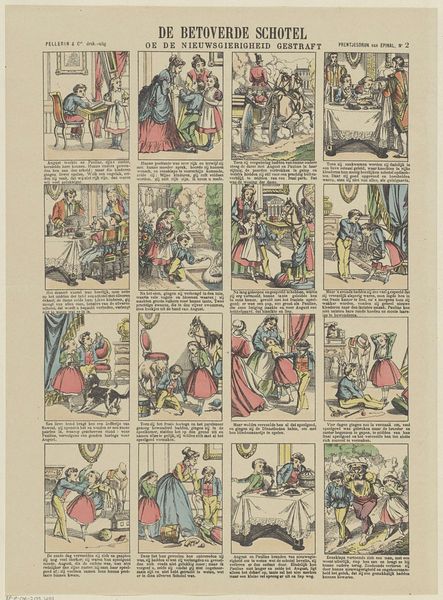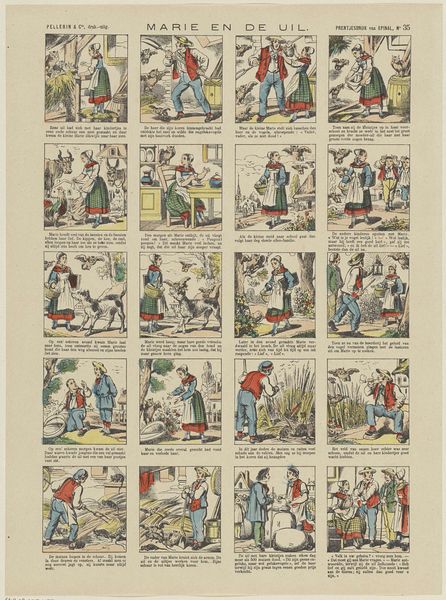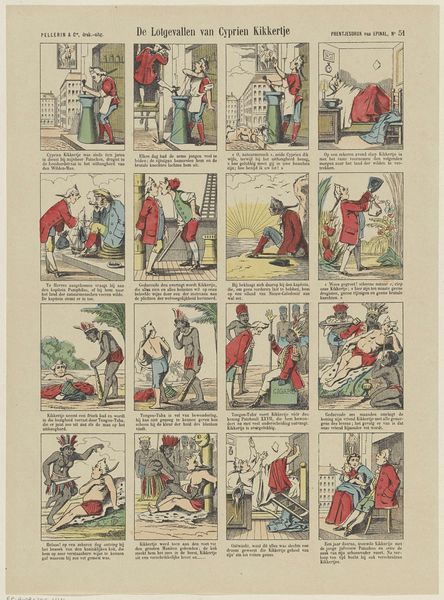
lithograph, print
#
narrative-art
#
lithograph
# print
#
genre-painting
Dimensions: height 428 mm, width 338 mm
Copyright: Rijks Museum: Open Domain
Editor: This print, entitled "Geschiedenis van den verloren zoon," or "History of the Prodigal Son," is attributed to A. Jacobs and was created sometime between 1840 and 1868. It's a lithograph that uses narrative art to convey its message, sort of like a comic strip. I notice it uses bright colors but there is also something a bit crude about the drawing. How would you interpret this work in light of its history? Curator: Well, that "crudeness," as you call it, is part and parcel of its intended audience. These “kinderprenten,” or children's prints, served a crucial role in the 19th century. This lithograph’s simple composition and narrative clarity ensured the story was accessible and memorable. It uses easily recognizable visual cues, even across social classes. Editor: So it’s more than just decorative? It actually had a social function? Curator: Absolutely. These prints democratized art and moral lessons, making them available to the less privileged in society. Its creation and distribution shaped the very idea of childhood. Think about the implications: standardization of art for children becomes tied to an idea of homogenous moral values. Who gets to decide what values are presented and how? Editor: I hadn’t considered that. It is definitely more than just a pretty picture. So it seems to shape behaviour. But also shape our cultural memory. Curator: Precisely. By looking at it in the social context, we can learn more than just the tale of the prodigal son. The role it played in Dutch society underscores the museum's responsibility in interpreting and preserving artifacts. Editor: Thanks, seeing this print in that social light really helped clarify not just its visual appeal but its role in shaping Dutch society’s understanding of morals and art. Curator: My pleasure. It reminds us of the often overlooked ways art actively participated in everyday lives.
Comments
No comments
Be the first to comment and join the conversation on the ultimate creative platform.
